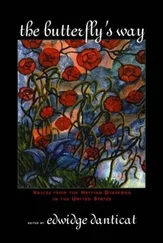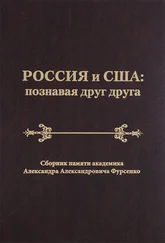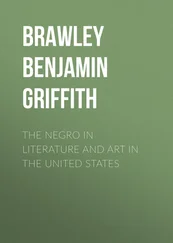Thomas Gentry - Nests and Eggs of Birds of The United States
Здесь есть возможность читать онлайн «Thomas Gentry - Nests and Eggs of Birds of The United States» — ознакомительный отрывок электронной книги совершенно бесплатно, а после прочтения отрывка купить полную версию. В некоторых случаях можно слушать аудио, скачать через торрент в формате fb2 и присутствует краткое содержание. Жанр: foreign_antique, foreign_prose, на английском языке. Описание произведения, (предисловие) а так же отзывы посетителей доступны на портале библиотеки ЛибКат.
- Название:Nests and Eggs of Birds of The United States
- Автор:
- Жанр:
- Год:неизвестен
- ISBN:нет данных
- Рейтинг книги:5 / 5. Голосов: 1
-
Избранное:Добавить в избранное
- Отзывы:
-
Ваша оценка:
- 100
- 1
- 2
- 3
- 4
- 5
Nests and Eggs of Birds of The United States: краткое содержание, описание и аннотация
Предлагаем к чтению аннотацию, описание, краткое содержание или предисловие (зависит от того, что написал сам автор книги «Nests and Eggs of Birds of The United States»). Если вы не нашли необходимую информацию о книге — напишите в комментариях, мы постараемся отыскать её.
Nests and Eggs of Birds of The United States — читать онлайн ознакомительный отрывок
Ниже представлен текст книги, разбитый по страницам. Система сохранения места последней прочитанной страницы, позволяет с удобством читать онлайн бесплатно книгу «Nests and Eggs of Birds of The United States», без необходимости каждый раз заново искать на чём Вы остановились. Поставьте закладку, и сможете в любой момент перейти на страницу, на которой закончили чтение.
Интервал:
Закладка:
Thomas G. Gentry
Nests and Eggs of Birds of The United States
Preface
FOR many years we have been of opinion that a work on NESTS and EGGS, in life-like colors, would be a valuable acquisition to ornithological science, and meet a want that has long been felt to exist. After vainly hoping that some more competent person than the writer would see the necessity therefor, and take a step in the right direction, we were beginning to despair of any such enterprise being undertaken, when, to our surprise, two publications, partially of this character, loomed up in the literary horizon, one hailing from Ohio, and the other from New England; the former, a local publication, seemed of such high pecuniary value as to be beyond the public reach; while the latter, fully up to it in merit of learning, but illustrating merely the eggs, was destined to failure from the first, and, after running a brief career, has at last ceased to exist. Under these circumstances we embarked in the project, in the confident expectation that our ornithological friends and others would give us encouraging support.
The utter impracticability and, we may say, impossibility of any scheme looking to the delineations of all the nests built by the many hundred birds belonging to our country, in the small space of a single volume, was obvious at the outset. All that we could promise our conscience were the figures of representative forms, and this we have kept in view, and endeavored to fulfil. To future series, if there should be a demand, we will leave the continuation of the subject, when, not being necessarily restricted to family types, we shall labor to invest the Plates with greater charms and attractiveness in the shape of rarer and more magnificent birds.
Upon cursory examination it will readily be perceived that the work has considerably deviated from its original aim. This change occurred shortly after the issuance of the third number, and in obedience to the popular demand, which insisted that the birds should be given with the nests, thereby entailing increased expense, but adding, it cannot be denied, largely to the beauty, utility and value of the publication. This innovation, dictated by good sense and sound knowledge, necessitated further expenditures of capital. In order that an air of uniformity should pervade the entire work, it was very essential that extra plates of birds should be furnished for the early drawings of nests. Determined that the work should be first class in every respect, and well worthy of patronage, the publisher spared not the expense, and once more exceeded the promises made to his patrons.
Especial pains have been taken with the text. The aim of the author has been to present a short, plain and detailed account of the habits of each species described, from the time of its arrival, if a migrant, until its retirement to the South in the fall. In the case of resident birds, he has been particular to give their winter history in addition to that of the breeding season, in the same orderly and continuous manner as is apparent in his descriptions of their more migratory brethren. The presentation of the events in regular sequence, if great care be not taken, is sure to lead to monotony. This he has tried to avoid, but how well he has succeeded, he defers to the judgment of his readers.
Throughout the work, considerable prominence has been given to those interesting and curious phases of bird-life which are present during the breeding-period, and which have been the principal study of the author for many years. Extraneous matter has been sedulously omitted, and nothing permitted to appear about which there could be serious doubts of accuracy. While he has drawn largely and, in very many instances, almost entirely from his own observations, recorded and unrecorded, for material, he has not hesitated to consult the writings of others, or to avail himself of the statements of reliable correspondents, where his own knowledge has been incomplete or defective. Wilson, Audubon, Nuttall, Brewer, although dead, have spoken to him through their valuable works, and yielded up their varied observations for occasional selections. Among living authors, to Baird, Coues, Ridgway, Allen, Samuels, Cory and Minot, and others less eminent, he has had access through their writings, and he now takes this opportunity of returning to them his grateful acknowledgments.
In the arrangement of the details of the Plates, the artist has been subject to the suggestions and dictations of the author, the constant aim of the latter being to secure accuracy in this respect, as well as the greatest variety possible. The typography, for clearness, sharpness, regularity and finish, has rarely been surpassed by that of any other work. Much praise is due the enterprising publisher for his liberality and public-spiritedness.
With these few preliminary remarks, we send this beautiful book out into the world, trusting that it may meet with a cordial reception everywhere. If it be the means of acquainting man with the lovable manners and interesting domestic relations of a few, though not all, of our feathered friends, and of restraining our youth from nest-destroying propensities by offering them pictures of the homes of birds for study and contemplation, and thus abate the evil; or if it add but one new fact to the author's favorite science of ornithology, or benefit it in any way whatever, he will rest satisfied, and feel that he has not labored in vain.
Thomas G. Gentry.
Germantown, Philadelphia, Pa.,
May, 1882.
Plate I. – AMPELIS CEDRORUM, Sclater. – Cedar-Bird
The Cedar-Bird, though mainly a denizen of the wooded regions of North America, and occasionally of cultivated fields and orchards, has been known to nest from Florida to the Red River country. But, wherever found during the non-breeding period, it is the same gregarious, nomadic species.
After the beginning of October, the search for food so completely engrosses the attention, that it is not until the latter part of May, or the beginning of June, that the flocks break up into pairs.
Nidification now becomes the all-absorbing passion, and the birds after mating, which business is generally conducted in a quiet and unostentatious manner, repair to the woods or hedges in quest of a suitable shrub or tree in which to establish a home. This matter requires considerable labor and care; and, ordinarily, no little time is devoted thereto.
The place usually selected, is a retired and unfrequented thicket or nook; or occasionally, an orchard in close proximity to an occupied dwelling. When the former, the cedar, with its tall, nearly vertical branches and dark green foliage, is, of all our forest-trees, pre-eminently fitted to receive, support, and conceal the nest; when the latter, the apple is accorded the preference.
Having chosen the locality, the birds waste no time in idleness, but apply themselves to the task of building, with the most commendable zeal and perseverance. Each bird has its allotted part of the work to perform: the duty of the male being to collect the materials; that of the female, to shape and fix them in their proper places. Occasionally the latter, when not thus occupied, accompanies her partner in his frequent journeys, and assists in collecting and bringing in his load. The time employed in the labor of construction, making due allowances for recreation and rest, is between five and six days.
In form, the typical structure is nearly hemispherical, and presents a rather neat and elegant appearance. It is compactly made, and, in the generality of instances, exhibits anything but bulkiness. In position, it rests upon the horizontal limb of a tree, or is wedged in among several upward-growing branchlets, at elevations varying from three to twenty feet.
Читать дальшеИнтервал:
Закладка:
Похожие книги на «Nests and Eggs of Birds of The United States»
Представляем Вашему вниманию похожие книги на «Nests and Eggs of Birds of The United States» списком для выбора. Мы отобрали схожую по названию и смыслу литературу в надежде предоставить читателям больше вариантов отыскать новые, интересные, ещё непрочитанные произведения.
Обсуждение, отзывы о книге «Nests and Eggs of Birds of The United States» и просто собственные мнения читателей. Оставьте ваши комментарии, напишите, что Вы думаете о произведении, его смысле или главных героях. Укажите что конкретно понравилось, а что нет, и почему Вы так считаете.












